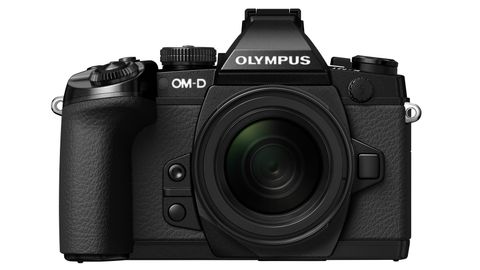Why you can trust TechRadar
While a 16MP sensor isn't really anything to write home about these days (unless it's in a full-frame retro-style Nikon SLR of course), the E-M1 certainly gets the best from its device. Images have rich, natural colours and smooth gradations along with an impressive level of detail. However, our resolution tests reveal that, apart from at the highest sensitivity settings, the E-M1 can't resolve more detail than the E-M5.
Noise is controlled well throughout the sensitivity range and color saturation remains good at the higher sensitivity settings.
The results at the top sensitivity setting, ISO 25,600 are especially striking, with very little noise being visible even when images are viewed at 100%, and fairly restrained levels of softening. That said, there's some luminance noise visible even at relatively low sensitivity settings.

Olympus's general purpose ESP metering does an excellent job in a range of situations, and although the exposure compensation control is required occasionally, it's not often. In fact there are some situations when you might expect it to be required, but the camera delivers correct results by itself.
In addition to the usual alternative metering options (centre-weighted and spot), Olympus continues to offer Highlight and Shadow spot. Of these two Highlight Spot, which is calibrated to allow exposure readings to be made from a highlight, is likely to be the most useful, but we found little reason to use it during this test. Still, it's nice to have the option just in case.
In good light, for example outdoors in daylight, the autofocus system is fast and accurate with both Micro Four Thirds and Four Thirds lenses. It's capable of keeping up with a galloping horse provided that you keep the active AF point over the subject. When light levels fall it becomes more hesitant, but it remains usable even in fairly dark conditions.
Art Filters
There are 12 Art Filter modes available on the E-M1. These can be applied in any of the exposure modes, so full control is still available over aperture and shutter speed. Furthermore, unlike many other manufacturers, Olympus allows them to be used when shooting raw and JPEG file simultaneously so the camera produces one image with the effect and another (the raw file) without. This is especially useful when you fancy experimenting with different looks or trying a new filter, but you're not sure that you will like the result. It's also a useful way of a showing portrait subject the type of look you are aiming for, even if you plan to do all the processing post-capture on a computer.
Another clever move from Olympus is to provide a bracketing option that captures all the filter effects with one press of the shutter release. The end result is 13 images, 12 with a filter effect applied and a raw file to treat as you like.
Olympus is to be applauded for offering a range of features which encourage users to be creative. The Live Bulb and Live Time modes are especially impressive and take some of the guess work out of making long exposures by showing the image build up on the screen during the exposure. It's worth bearing in mind that the final image usually looks a little different to how it did on-screen, but it's a superb feature that isn't offered by any other manufacturer.

